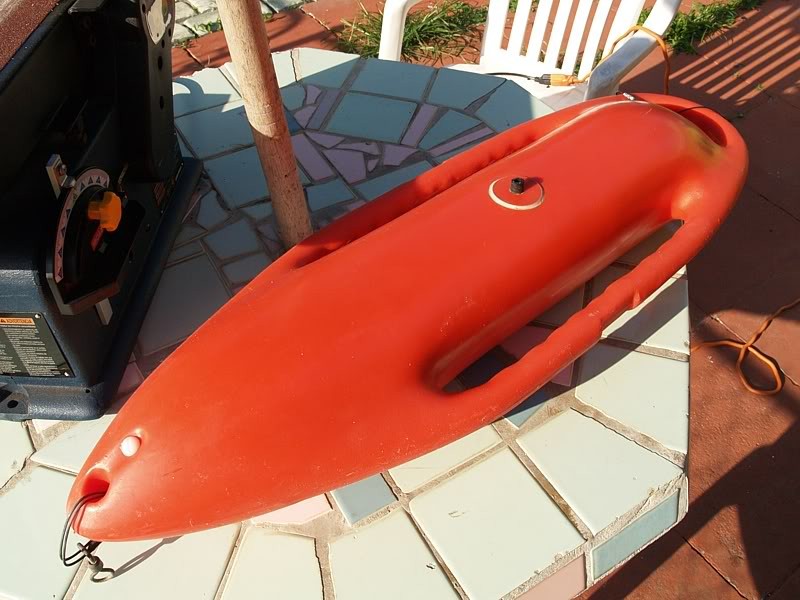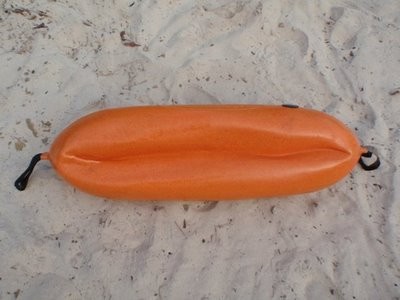Anybody know what the buoyancy/lift of those vinyl boat fenders are? Has anyone every used one as a bluewater float before?
Chase
Anybody know what the buoyancy/lift of those vinyl boat fenders are? Has anyone every used one as a bluewater float before?
Chase
We use them on chunk rigs, can't tell you their bouncy but can tell you fish over 300lb have been taken with boat fenders, sometimes they go down for long and need a good eye on them.
So they are able to handle the pressure of an 1-2 atmospheres no problem? Trying to find a cheap solution for my first bluewater outing for wahoo.
Thanks,
Chase
Sorry chase the float system I use is lobster/fish trap bouys not fenders. Fenders are to cumbersome and heavy to drag around. I have been where you are and my advice is not to over think the blue water float system like I did. Couple of large size lobster floats is all you need for wahoo, I learned the hard way that you need a float line of at least 125 ft to allow the Wahoo to make its first run with minimum resistance. Personally I shoot wahoo exclusively with big reels now. I only bring out the float lines for tuna and if I suspect I might have my first shot at a prize billfish
I rarely shoot wahoo in season below 40lbs and I know my simple cheap rigs work as well as the grossly overpriced stuff they pimp as absolutely necessary to take your money from you, this is endorsed by most in the industry as it in some way benefits their pockets... don't believe the hype.
Thanks George! I was actually thinking of using my 70m reel with a 60ft float line/float attached to the gun just in case. What do you think about this setup?
Thanks,
Chase
I think that would depend on the reel(how solid it is) and how well you mounted it, also how you lead your reel line is a big deal. But with wahoo I have no less than 300ft of line on my reels. Playing the fish in with all the line in the water is the most critical part and the most dangerous to you personally. Jon from ULUSUB has a great thread on the technique on spearboard
I recommend starting with a float line and floats and when you are used to the fishs behavior you can try the reel with a float on your gun
Ok thanks!
Chase
A float system is much more sure than a reel. The old thing to do was lifeguard cans filled with foam, which requires some work but is affordable. Not sure which systems you're referring to George. The inflatables floats that I know of, when you consider the effort and some expense of making your own stuff, it's just more convenient to get something purpose made if you have some cash to spare. Especially if you need it for traveling. If you have more time than money I understand, and in a pinch many an object can serve as a float. Mani told me he used the boat life ring as a float to land this wahoo.
Absolutely Dan, float line is the safest best way to land a fish, using a reel is dangerous to the diver and hazardous to the divers equipment!
For travel I would not carry my own floats, deflated or otherwise. Fishing floats/lobster trap floats can be found in any part of the world for cheap. At the start of the thread are pictures of the floats I use, haven't disappointed me yet.
Man that wahoo almost looks like a record. Im guessing 115lbs. Either way thats cool that he got such a nice fish!
Chase
I do like your float system George. In worst case if not enough, you just rig two of them. My consideration with a float for everyday use is normally how much lift it has vs how much drag it creates, making it difficult for the diver to tow it around for long periods of time. In the case of bluewater I think this is negligible. My understanding is bluewater hunters don't swim great distances. They chum, jump in, hang out a bit, and move on to the next spot. So the float doesn't have to be ideal in terms of drag. And actually in the case of a tuna board creates a lot of drag which is what you want.
That's a pretty good understanding, but lots of places you can shore dive for pelagics. This system doesn't create much drag at all, notice the float line drag more than the floats when using my bungees for big fish
I know of one place in Cuba, wahoo and billfish 100 yards from shore. I put a securing shot in a sailfish there after it was hooked from shore. I don't think such a place exists in continental US. Unless something like a cobia run happens with other species which I'm not aware of.
I can see George's float is fine drag wise. I made something like it myself years ago for inshore use, it also had a flag and ballast http://spearfishing.world/floa…ds/27-diy-float-flag.html

Here's a thread on the lifeguard can float http://spearfishing.world/floa…ard-rescue-can-float.html. With 4lb density foam which has some crush resistance the float was quite heavy to carry with the rest of the gear, but in the water had very little drag.

A float system choice is a balance between lift, crush resistance, drag for diver, drag for fish (which are kinda' the same consideration) convenience of transporting, availability of materials if making your own, and price. You can go with huge lift capacity and get away with the cheap lobster floats (which have very little crush resistance) problem is if the fish is powerful and goes deep unable to take the floats down, the shaft will tear out. If the floats provide just enough lift that they're hard to take down but eventually do get taken down before the shaft tears out, they need to be crush resistant.
If I was going to rig for bluewater I'd choose a compact float system with great lift and negligible crush resistance, and use a bungee for at least part of the float line to apply steady pressure on the fish and prevent shaft tear out.
Chase, a boat fender will collapse when pulled down by a fish. Pay attention to George and pick a couple bullet shaped lobster floats. They cost less than 10 bucks each. More than enough for wahoos.
Another point, I dropped my cheep orange floats down to 100 ft with my boat anchor, and it compacted quite a bit but retained some buoyancy. When it returned to the surface all the compaction disappeared very quickly and it returned to its original shape and buoyancy.
Edit: I forgot to mention I have yellow bullet floats designed for deep water use, they are far more expensive but retain the buoyancy at great depth without crushing, still a fraction of the price of all the must have floats on the market.
That's great info George, and surprising too. I'd like to make that test myself, at least to gauge our locally available lobster buoys. Here's a pic of a Rob Allen float that compressed, I forget at what depth. I was sure the lobster buoys would be less compression resistant.

Once a wahoo took a small lobster buoy like 80 feet down. I thought I'd lost my speargun and the fish as I clipped Alessandro's float directly to my gun's butt. After few minutes it surfaced with some "wrinkles", but a couple days after it was normal again.
Yeah Marco that's been my experience as well, truth is no matter what system you have, like Don said earlier in the thread, if a big fish sounds deep that's it, and most times I am in 12,000 foot of water...lol
That's great info George, and surprising too. I'd like to make that test myself, at least to gauge our locally available lobster buoys. Here's a pic of a Rob Allen float that compressed, I forget at what depth. I was sure the lobster buoys would be less compression resistant.
I believe I read that compressed at 50m which is pretty deep.
You need to be a member to leave a comment.

